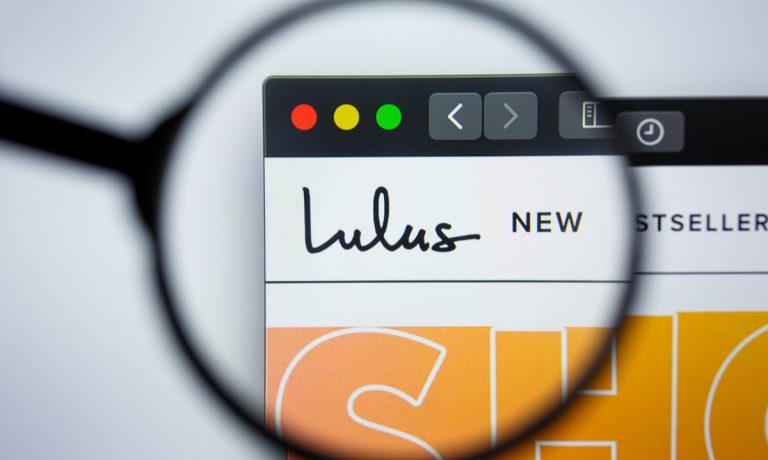
A series of proposed public offerings from eCommerce companies are putting the digital shopping experience on display and highlighting potential pitfalls for merchants as consumers continue to shift more of their attention to digital channels.
Rent the Runway, for example, said in its filing with the Securities and Exchange Commission (SEC) for a public listing that as many as 80,000 retailers, or 9% of stores, will close their doors over the next five years, making direct-to-consumer an “essential channel” for every brand.
See: Rent the Runway Sees Subscribers Rebound From Pandemic’s Depths
And fast fashion eTailer Lulus, which started as a brick-and-mortar boutique in 1996 before transitioning to an online-only model by the mid-2000s, noted in its S-1 filing with the SEC that even as traditional retailers transition to a more omnichannel model, they’re trapped in “a prolonged merchandising and buying cycle that requires brands and retailers to forecast fashion trends and consumer demand several quarters into the future.”
“Inventory management becomes a critical pain point, whereby inventory shortage results in lost sales, while inventory surplus results in significant markdowns,” Lulus said in the filing.
Lulus said in its prospectus that unlike those retailers, it leverages a “test, learn and reorder” strategy that brings hundreds of new products in small batches to market each week to learn about customer demand “and then quickly reorder winning products in higher volume to optimize profitability.”
“This strategy allows us to rapidly convert new products into profitable sales on a consistent and repeatable basis while minimizing fashion and trend risk,” Lulus said, in stark contrast to the traditional merchandising approaches reliant on in-house design cycles, seasonal assortment decisions and deep buys, which Lulus noted “are risk and capital intensive.”
Lulus says it has 2.5 million active customers and over 7.5 million followers on social media, up from 5.5 million a year ago, with 40% net revenue growth year to date — though last year was notably an off year for apparel sales, skewing year-over-year comparisons. Nearly two-thirds of Lulus’ sales come from repeat customers.
Saks, the eCommerce-focused spinoff of Saks Fifth Avenue, is reportedly also mulling a public offering that could come as soon as next year, with a potential valuation of over $6 billion. When Saks went private last year, the entire company was valued at about $1.5 billion; the Saks.com spinoff, which occurred in March, was valued at $2 billion.
Related: Saks eCommerce IPO Plans Show Allure of Retail’s Digital Shift
PYMNTS’ Connected Economy research has found that 92% of consumers have placed an online order for a product or service at least once recently, with 10% doing so multiple times per day. Nearly one-third of consumers say they are highly connected shoppers, including 34% of millennials, who own an average of six devices.
Transforming the Store
To be sure, physical retail is far from dead — the model is simply adapting to changing consumer preferences, albeit at a much more rapid pace than was expected just two years ago. Features such as buy online, pickup in-store (BOPIS), curbside pick-up and two-hour delivery, popularized during the pandemic, are here to stay, and many retailers are merging the online and physical to create a single omnichannel experience for customers.
PYMNTS research, conducted in collaboration with Carat from Fiserv, found that nearly 44% of consumers say they would shop more at physical stores if BOPIS was offered and 42% say they would shop at physical stores more often with curbside pickup.
Read more: ‘Buy Now, Get Now’ and ‘Buy Now, Get Later’ Add New Dimensions to Bring-It-To-Me Economy
Steve Sadove, senior adviser at Mastercard, told Karen Webster in a recent interview that this holiday season will likely be a test from consumers on how satisfied they are with the in-store experience. If it’s a great experience in which people find what they want and get good service, he said, they’ll likely go back even if they continue shopping online for certain items; otherwise, physical retail could be in trouble.
“The fastest way to go into a declining trend is to not give a good consumer experience,” Sadove said. “You’re at that moment right now, and some are going to do it well and some aren’t going to do it well. And that’s sort of going to affect how this plays out over the next six months to a year.”
See: Holiday 2021: Pent-Up Consumer Demand, Test of In-Store Experience For Retailers
Changing Tastes
For fast fashion brands such as Lulus, though, changing consumer preferences and supply chain issues could also be a drag on future performance. Mat Dunn, chief operating officer of ASOS, said earlier this month that the retailer’s performance “is likely to be constrained by demand volatility and global supply chain and cost pressures,” with growth beginning to slow in recent quarters.
Fast fashion may also be facing an increasing number of consumers who are focused on the environmental impact of their lives and their purchases, leading them away from brands who are accused of overproduction and creating garments that are meant to be thrown away.
Related: Fast Fashion Faces Strong Headwinds, Changing Consumer Preferences
In its filing with the SEC, Lulus acknowledged this headwind but said its model of testing small batches gives it an advantage. “We believe that digitally-native brands are best positioned to succeed,” the company said.